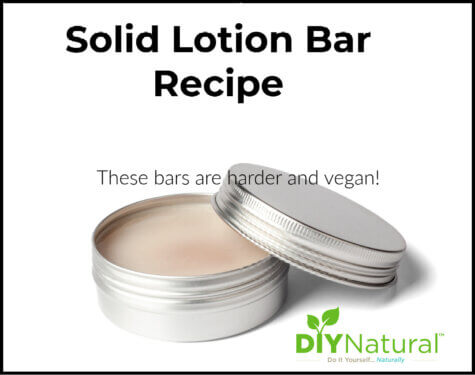
You’ll love this DIY witch hazel toner! Witch hazel cleanses skin of germs and bacteria, soothes inflammation, and is a great astringent.
In this article, you will learn how to make DIY witch hazel and also an amazing witch hazel toner!
Witch hazel is an ingredient that comes up in many DIY beauty projects. Someone recently asked me about the difference between rubbing alcohol and witch hazel. I started to respond by mentioning that sometimes I make my own, and the individual was taken by surprise that it was even a possibility.
Uses for Witch Hazel
Witch hazel is traditionally used for skin abrasions and tightening large pores. I have large pores and find that witch hazel toner helps shrink the appearance. It is very astringent, which makes it good for use on hemorrhoids.
Witch hazel also cleanses the skin of germs and bacteria and can soothe inflammation. Apply it to skin abrasions such as scrapes or scratches. It works quickly to relieve the itching from bug bites too!
You can also use it for the wetting agent in your DIY bath bombs. If you are using it for this purpose, the higher alcohol content in your witch hazel is better. (When I make it for this purpose, I use 91% rubbing alcohol in my DIY witch hazel recipe below. Don’t worry, the smell goes away in a short time.)
Making DIY Witch Hazel Extract
Finding the right plant
Witch hazel is a shrub that grows all over the US and some other countries as well. It rarely gets above 8-feet tall and is usually found near water. It blooms in late fall into winter with small yellow blossoms that kind of look like spiders. Cultivars are available that have coral, bright pink, or even chartreuse blossoms.
We have several witch hazel shrubs on the grounds of the college where I work. The leaves are a deeply veined oval and the branches kind of flare-up on the ends. To envision this, lay your hand out flat, palm down, and imagine your fingertips curling towards the back of the hand slightly. In the winter, the branch will look something like this.
There are other similar landscaping plants in the same family, such as Fothergilla and Loropetalum. It’s not known how much of the active constituent is in these, so it’s best to stick with the real thing.
Get the right part of the plant
The part of the plant that will be of the most use is the inner root bark, but most people use the entire root. You can dig a few shallow holes near the drip line (where the leaves drip water onto the ground). The root ends are the best. You don’t need to take much or take an entire piece of root. A couple of root twigs will be sufficient. Clip these off and rinse in the stream nearby. (There will always be one!) Wrap in an old towel and bring it home. You can also purchase dried organic root bark online here or here.
Preparing the extract
Supplies
- 1 cup chopped witch hazel root bark
- alcohol, such as vodka, at least 40%
- pint jar with lid
Process
Place all of your chopped roots into the jar. Cover with the alcohol, making sure all of the plant material is covered. Place lid on the jar. Some of the plant matter may float at first but will sink within a day or so. If needed, add more alcohol later to keep it covered.
Place in the sun, on a table or window ledge, for about two weeks. Shake every day if possible. After two weeks, strain and discard the roots. Bottle and label your extract. Store your witch hazel extract in a dark place, like a medicine cabinet.
If you used vodka, the alcohol content will be about 40%. Most commercial witch hazel runs about 20%. You can use it undiluted, but if you find it too drying, you can dilute it with distilled water to a 20% alcohol concentration. Example: If you have 1 cup of witch hazel, you can add up to 1 cup of distilled water. This ratio will make it around 20% alcohol.
Witch Hazel Toner Recipe
Ingredients & Supplies
- ½ cup witch hazel extract (from the recipe above or buy it here)
- ¼ cup apple cider vinegar (make your own or buy it here)
- 10 drops frankincense essential oil
- 5 drops tea tree essential oil
- enough distilled water to make a total of 1 cup of toner (around ¼ cup)
- 8 oz. amber glass bottle with cap
Directions
Place all ingredients in an amber glass bottle. Cap and shake well to combine. Store away from heat or light.
To Use
Shake well before each use. Wet a cotton pad with the witch hazel toner and apply it to the face and neck. It can also be used on acne-prone areas such as the chest and back. Feel free to substitute different essential oils depending on your skin type.
Check out the following article to learn a different method for making your own witch hazel:
*******




I use a paste of witch hazel and baking soda on poison ivy rashes. It soothes and helps dry out the rash.
Good idea Pilar, thanks for sharing.
Matt
Is there a variation of this that you recommend for dry and older skin?
I’m not aware of witch hazel growing anywhere here in New Mexico.
You may not have any there, Clergylady. You can usually get the shrubs at a garden center or you can get the plants or seeds on Amazon. You can also buy the bark dried at a local co-op or online. If you do get a shrub or seeds, they doo need to grow in a damp location. Hope this helps!